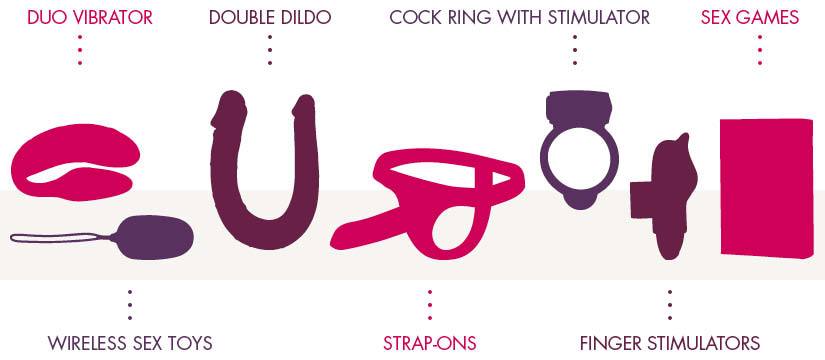What is the Stand and Deliver sex position?
It’s a standing, face-to-face position where one partner is upright and the other is partially supported—either lifted at the hips, perched on furniture, or bracing one leg higher for angle. Think “close, vertical, kiss-friendly.” The charm is simple: you’re eye-to-eye, breathing the same air, and able to adjust depth with tiny shifts in knee bend or hip tilt. When done with solid footing and good leverage, it offers powerful intimacy without requiring a gym membership.
Why do people love it?
Because it blends romance and practicality. You can kiss, whisper, and keep constant contact through the chest and hands. It’s quick to set up, easy to modify, and gentle on pacing. The angle can be tuned to feel deep or teasing, and you can move between rooms without losing the mood. For many, it’s less about acrobatics and more about micro-adjustments that make your bodies line up just right.
What consent and safety basics should we set before trying it?
Keep it warm and simple:
- Agree on yes/maybe/no boundaries first.
- Choose a safe word or color words (green = good, yellow = slow/adjust, red = stop).
- Plan your grip points and where you’ll take breaks.
- Clear the floor. Remove rugs that slip.
- Decide who leads balance and who calls the pace.
Consent talk should sound like foreplay, not a contract. Short lines help: “Closer okay?” “Hold there?” “More or less?”
How do we set up the base version without strain?
Use the three-point triangle:
- Feet: shoulder-width apart for the supporting partner; one foot half a step forward for balance.
- Hips: lightly tucked to protect the lower back.
- Hands: one hand anchors mid-back or under the bum for support; the other rests at the waist or along the ribs for guidance.
The receiving partner can brace one hand on a wall, doorframe, or the supporter’s shoulder. Keep knees soft on both sides. Locked knees are the enemy of rhythm and comfort.
Is lifting required?
No. Many couples never lift and still love Stand and Deliver. Instead, raise the receiver, not the giver:
- Perch on the edge of a counter, dresser, or sturdy table (test it first).
- Use a sturdy chair pressed firmly against a wall to prevent sliding.
- Place a yoga block or two under one foot for small height changes.
These tricks align hips without deadlifting anyone, keeping things safe and sustainable.
How do we find the right angle?
Use “aim and shave” adjustments—small, patient shifts:
- Bend or straighten the supporting partner’s knees by a centimeter or two.
- Tilt the pelvis slightly up or down to change pressure lines.
- Move the receiver’s bracing foot one shoe-length forward or back.
- If perched, scoot the receiver a little closer to the edge.
Shallow strokes first, then tiny changes. Big moves often overshoot the sweet spot; micro-moves lock it in.
Any anatomy notes for better targeting?
Yes—keep it specific and gentle.
- For vulva owners, a slight downward angle plus a small hip lift often increases front-wall contact (the region many describe as G-spot sensitive).
- For penis owners, the snug, hugging alignment and steady pressure feel great when strokes are short and controlled rather than long and fast.
- For anal play, prioritize lots of lube, slow depth, and stable bracing. Standing can magnify sensation; patience keeps it comfortable.
What if grip strength or height differences are an issue?
Work smarter:
- Slide the receiver’s thighs over the supporter’s hips rather than lifting vertically. Let bones, not biceps, carry the load.
- Use furniture height to meet the supporter’s pelvis. Kitchen islands, desks, or washing machines give leverage (place a towel for comfort).
- Try a wall sit variant: the supporter leans their upper back to a wall and squats slightly, while the receiver wraps comfortably and leads angle cues.
- If heights are far apart, stack a firm cushion or low step under the shorter partner or bend the taller partner’s knees a touch to align.
How do we keep it romantic rather than workout-ish?
Slow tempo, gentle breath, kind words. Between movements, add stillness holds: press chest-to-chest and breathe together for one full exhale. Use soft, specific praise—“Stay there,” “That pressure is perfect,” “Your hands feel amazing.” Let the eyes carry some of the intensity; you’re already face-to-face, so milk the moment.
What about lube, clothing, and fabric?
Standing can increase friction. Keep lube nearby and reapply when glide fades. Clothing can stay partly on for a flirty, cinematic feel—lift a hem, open a button, slide a sleeve. Avoid slippery fabrics under feet and avoid oils near latex if you’ll use condoms later. A small towel where skin meets counters can add both comfort and grip.
Can you give us a few friendly variations?
Absolutely—keep them consent-first and low-strain.
Doorframe Perch
Receiver holds one hand on the frame and tips the pelvis slightly forward; supporter steps close and anchors at the waist. Great for subtle depth control and quick breaks.
Counter Kiss
Receiver sits on a counter with heels anchored on a lower cabinet lip for leverage; supporter stands between and sets a slow rhythm. Eye contact and kissing are easy here.
Chair + Wall Assist
Sturdy chair against a wall; receiver perches, supporter half-squats. Hands roam, rhythm stays smooth. Zero lifting, high control.
Wrapped Balance
Receiver crosses ankles behind the supporter (only if comfortable). Supporter widens stance and uses a wall for micro-support. Great for closeness; keep sessions short to avoid thigh fatigue.
One-Leg Braced
Receiver stands and braces one foot on a raised step or ottoman. This tilts the pelvis and can dial pressure with no lifting at all.
How do we build a beginner-friendly routine for tonight?
Keep it simple and repeatable:
- Warm-up (2–3 min): hug, breathe nose-to-nose, slow neck/shoulder strokes.
- Align (1–2 min): choose a perch or wall assist; test footing; share a short yes/maybe/no.
- Shallow start (2 min): tiny strokes, easy breath, soft praise.
- Micro-tune (1–2 min): adjust knee bend or hip tilt by a hair; reapply lube if needed.
- Hold beats (1–2 min): add a stillness hold every four strokes; enjoy eye contact.
- Cuddle exit (1–2 min): ease out, hug, water, quick body check.
Same loop next time; change just one variable. Routine makes your bodies smarter and more relaxed.
How do we keep wrists, knees, and backs happy?
- Wrists: use forearms on walls instead of stiff, straight wrists.
- Knees: keep a soft bend; place a foam mat if on tile.
- Backs: tuck the pelvis slightly and drive movement from the hips, not the lower back.
- Breaks: plan them; “water and grin” is part of the scene, not a failure.
What language keeps the flow while protecting boundaries?
Use compact cues:
- “Softer?” / “More?”
- “Higher tilt.” / “Lower tilt.”
- “Stay shallow.” / “Hold there.”
- “I need a break.”
Short lines keep the mood alive and still give crystal-clear consent signals.
Can this be playful for couples who get shy with eye contact?
Absolutely. Try forehead-to-forehead breathing, or look at each other’s lips, collarbones, or hands. Stand-and-deliver is perfect for soft teasing: whisper a compliment, slow your breath, smile between words. Connection, not performance, is the magnet.
What if we want this to feel more cuddly?
Bring the chests together fully, wrap the arms around the back, and keep strokes shorter. Layer in gentle praise. End with a two-minute embrace right where you are. That afterglow is often better than any big finish.
How do we adapt Stand and Deliver for plus-size bodies or mobility needs?
Design the position around furniture height and comfort:
- Use waist-high surfaces to eliminate lifting.
- Consider side-entry angles where one hip faces the partner; it reduces hip flexion demands.
- Seated supporter + standing receiver can feel fantastic and very stable.
- Keep sessions brief, rotate to a sofa cuddle, then return if you like. Your bodies decide the architecture; the position adapts to you, not the other way around.
Are there ways to stack sensation without speeding up?
Yes—three simple tools:
- Shorter strokes amplify pressure without adding depth.
- One-breath holds intensify focus and keep control high.
- Micro-circles with the pelvis create texture while preserving the sweet spot.
What compliments actually land well in this position?
Be specific and kind:
- “That angle… yes.”
- “Your hands feel so steady.”
- “I love seeing your eyes this close.”
- “Stay just like that.”
These lines tell your partner exactly what to repeat, boosting confidence.
How can this position help with understanding men’s preferences?
Stand-and-deliver makes feedback easy because you’re face-to-face and can read breath, posture, and micro-expressions. If you’re curious about pacing, confidence, and praise that many men enjoy, this compassionate, plain-language guide can help you tune the moment: what do guys like during sex. Use it to refine cues and rhythm while staying consent-forward. (Internal link included once.)
Frequently Asked Questions
Is lifting your partner necessary for the position to work?
Not at all. Most couples prefer a perch or wall assist. The magic is alignment, not heroics.
How do we know when the angle is right?
Breath deepens, shoulders drop, and both bodies lean in. If chatter stops and smiles appear, you’ve found it.
What if it starts to feel like a workout?
Shorten strokes, add stillness holds, and use furniture to carry weight. Take a water break and return at half-speed.
Can we keep clothes on?
Sure. Partially opened shirts, lifted hems, and soft fabrics keep things sensual and relaxed.
What lube works best here?
Any high-quality, body-safe lube. Standing angles create friction, so reapply mid-session. Keep oils away from latex barriers.
How do we prevent slipping?
Bare feet often grip better than socks. Use a yoga mat or rug with a non-slip back. Test surfaces before play.
Is this position beginner-friendly?
Yes—if you start with no lifting and small adjustments. Treat it like a gentle waltz, not a sprint.
What if one of us is much taller?
Change surface height or bend the taller partner’s knees slightly. Even a one-inch shift can transform the feel.
Can we add toys?
Yes—small external toys pair well because hands are free. Keep intensity low at first and secure cords or grips so you’re not juggling.
How do we end gracefully?
Ease to stillness, hug, breathe, and slowly step apart. Offer water. Mention one thing you loved and one thing to try next time.
What if I get shy about eye contact?
Look at lips or collarbones, or rest forehead to forehead. You can also close eyes during stillness holds to reset nerves.
Is aftercare necessary for a standing position?
It’s always a good idea. A two-minute cuddle, water, and a warm towel change the whole memory of the night.
Any quick fix for knee or back twinges?
Go shallow, bend the supporter’s knees slightly, and tuck the pelvis. Switch to a perch to offload weight.
What’s the single best tip for success?
Micro, not macro. Tiny knee bends, tiny hip tilts, tiny pauses. The small stuff makes this position sing.
A soft, repeatable script you can use tonight
- “Let’s try the counter—no lifting.”
- “Tell me more or less.”
- “Hold there while we breathe.”
- “Shorter strokes… yes.”
- “Water?”
- “I loved how steady you were. Same time tomorrow?”
Final notes
The stand and deliver sex position shines when you treat it like a slow dance. Choose stability first, then layer in closeness, breath, and praise. Use furniture to align hips. Keep strokes short and patient. Check in with small words and warm eyes. End with aftercare. Do these simple, human things, and this “standing classic” will feel less like a trick and more like a shared rhythm—one you can find again anytime you’re in the mood to stand, hold, and deliver together.



![Most Powerful Bullet & Mini Vibrators [Tested in 2025]](https://couplepleasure.com/wp-content/uploads/2025/10/image-11-2.jpeg)
